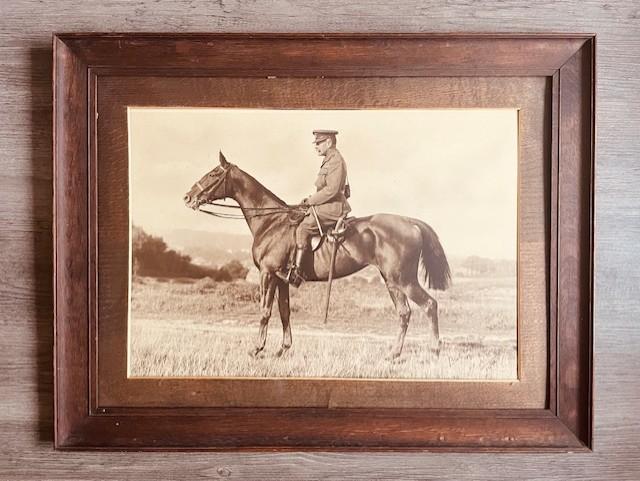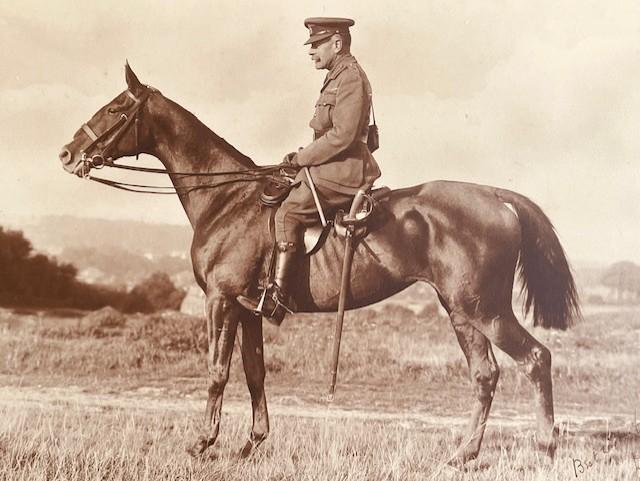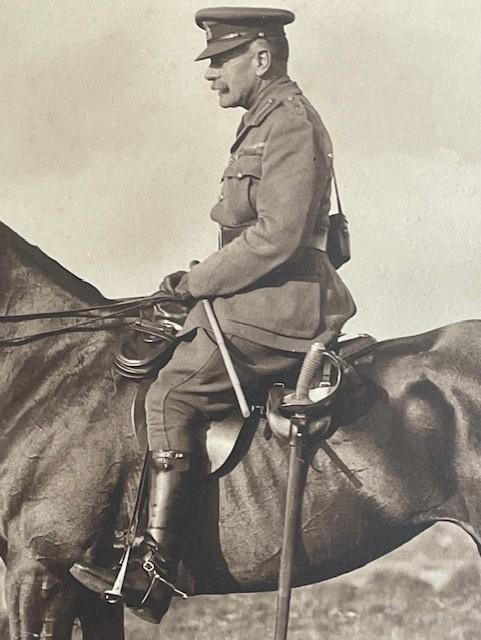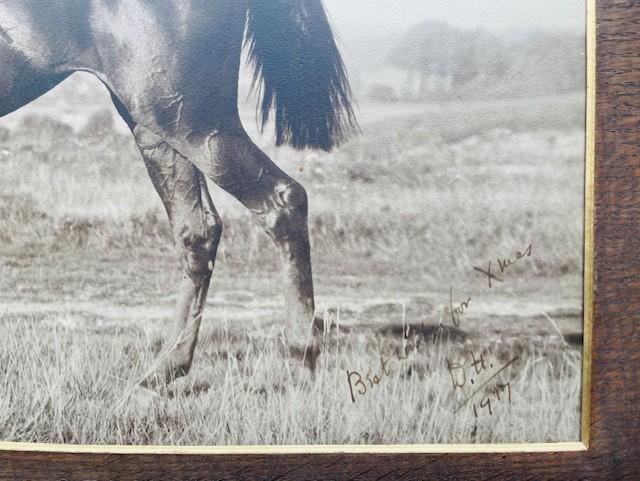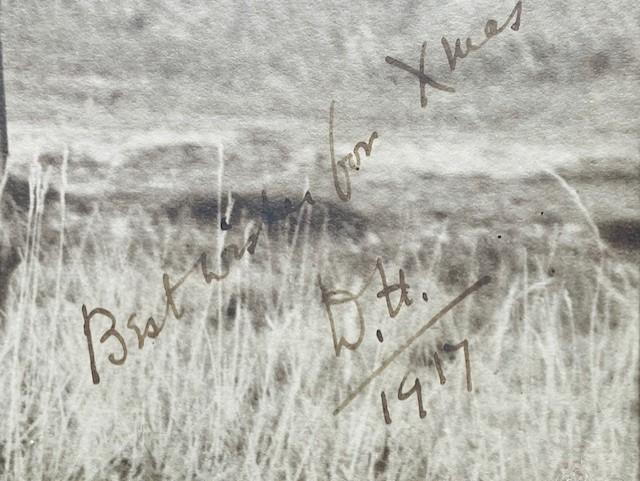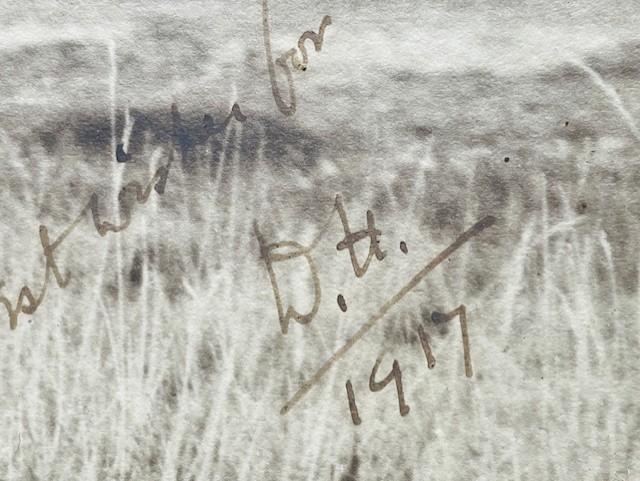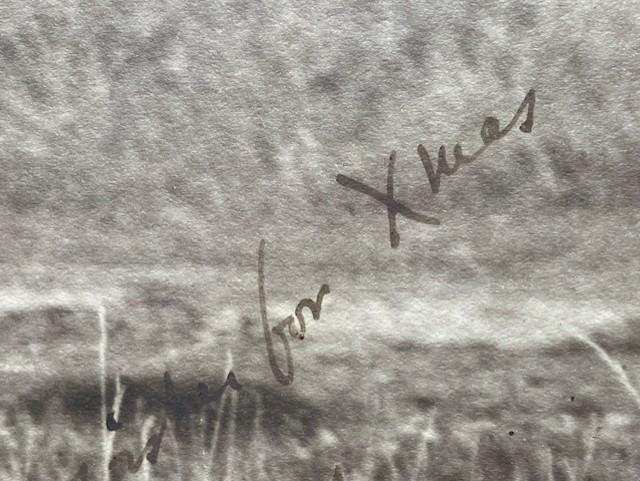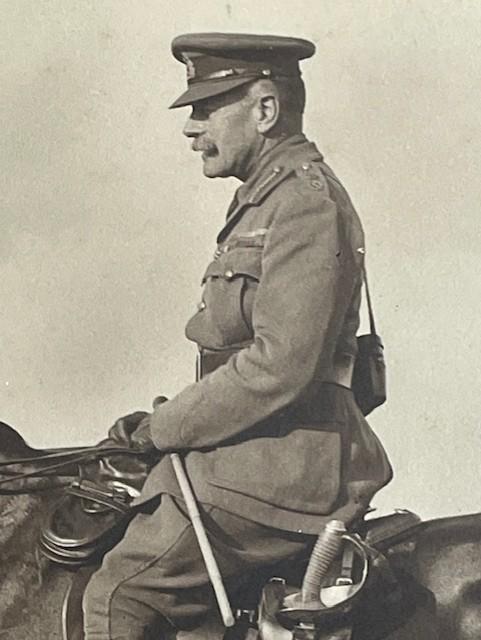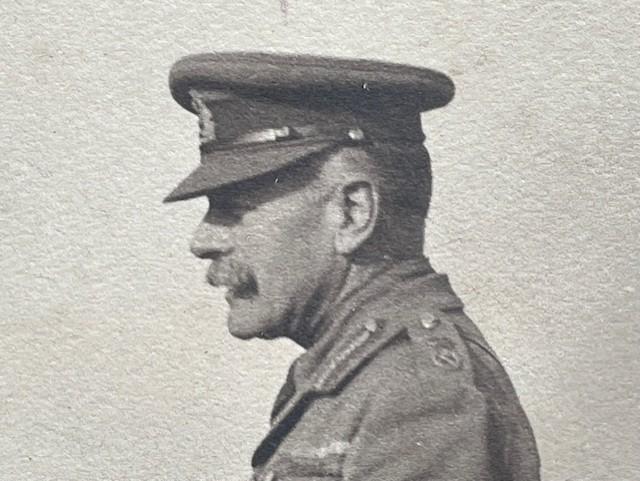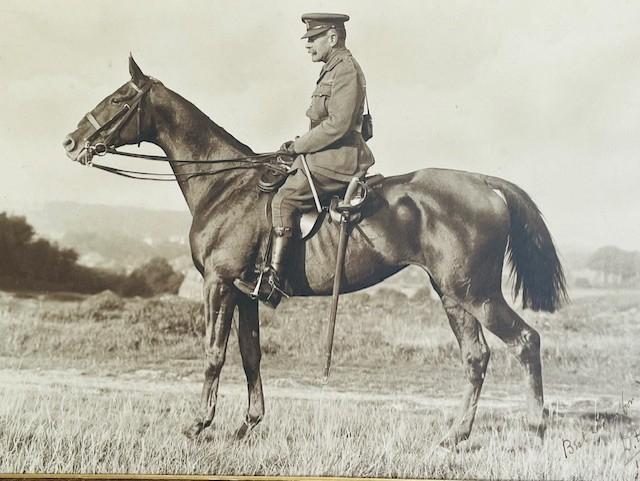WWI PHOTOGRAPH FIELD MARSHAL DOUGLAS HAIG, HAND SIGNED DEDICATION & INITIALLED 1917 X MAS.
A wonderful original large hand signed photograph with its original frame of British Field Marshal Douglas Haig with Christmas dedication lower right hand side Best Wishes for Xmas D.H. 1917, in full military uniform mounted upon horse. 1st Earl Haig, KT, GCB, OM, GCVO, KCIE (1861-1928). British Field Marshal of World War I, Commander of the British Expeditionary Force on the Western Front. A large sepia photograph of Haig on horseback in full uniform, taken when conducting a review of the British troops during the First World War, with a personalised signed inscription to the lower right hand corner in dark fountain pen ink, Best wishes for Xmas, D.H., 1917, The photo sits within its original wooden framed and mounted but unglazed, portrait 565mm x 390mm, overall dimensions 775mm × 600mm
Provenance: Major Hugo Macdonald-Haig (1912-1997), thence by descent. This portrait was likely gifted as a Christmas present to Brigadier-General Roland Charles Haig (1873-1953), who was Earl Haig's cousin.
About Douglas Haig - His military career included service in the War Office, where he was instrumental in the creation of the Territorial Force in 1908. In January 1917 he was promoted to the rank of Field Marshal, subsequently leading the BEF during the final Hundred Days Offensive. This campaign, in combination with the Kiel mutiny, the Wilhelmshaven mutiny, the proclamation of a republic on 9 November 1918 and civil unrest across Germany, led to the armistice of 11 November 1918. It is considered by some historians to be one of the greatest victories ever achieved by a British-led army. He gained a favourable reputation during the immediate post-war years, with his funeral a day of national mourning. However, he also had some prominent contemporary detractors and, beginning in the 1960s, has been widely criticised for his wartime leadership. He was nicknamed Butcher Haig for the two million British casualties under his command. The Canadian War Museum comments: His epic but costly offensives at the Somme (1916) and Passchendaele (1917) have become nearly synonymous with the carnage and futility of First World War battles. Since the 1980s many historians have argued that the public hatred of Haig failed to recognise the adoption of new tactics and technologies by forces under his command, the important role played by British forces in the allied victory of 1918 and that high casualties were a consequence of the tactical and strategic realities of the time,Size: portrait 565mm x 390mm, overall dimensions 775mm × 600mm fine condition
Code: 50864



